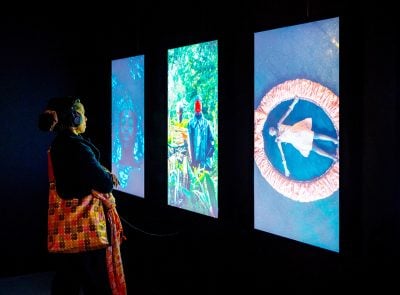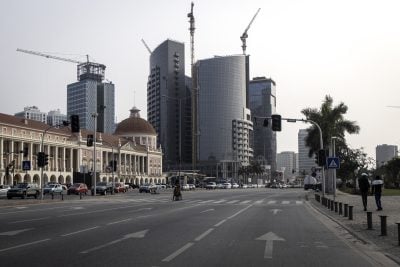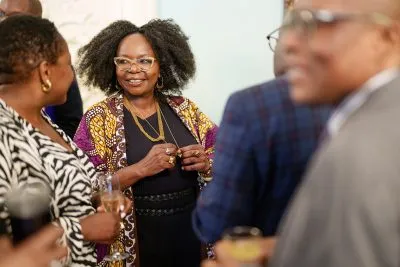It has long been recognised that massive investment is needed to enable African states to embark on the energy transition in a timely manner. The rapid development of solar power in particular, but also wind energy, is needed to help minimise power sector emissions on the continent while also driving electrification campaigns and providing electricity for a large-scale switch to electric vehicles.
Several mechanisms have been launched to funnel the required financing to the continent – some of it via African banks – but they need to be scaled up quickly to justify demands that African coal and oil reserves be left untapped.
Under the United Nations’ COP process (COP, the Conference of Parties, is the supreme decision-making body of the UN Framework Convention on Climate Change, UNFCC), each country has committed to reducing its greenhouse gas emissions by varying extents, in what are termed nationally determined contributions (NDCs).
The cost of implementing all African NDCs is estimated at $2.8tn by 2030, which is roughly equivalent to the annual GDP of all African countries combined. Climate finance flows in Africa reached an annual figure of just $30bn in 2021 and so must increase tenfold if this figure is to be met.
African governments themselves are expected to provide $277bn, just 10% of the total, meaning that the remainder must come from external sources. However, a range of initiatives have been set up to provide part of the required investment, which in turn could encourage part-financing from the private sector and other investors, with African financial organisations required to help direct this funding to where it is most needed.
A 2021 survey by the European Investment Bank found that almost 70% of banks in sub-Saharan Africa saw green finance as an attractive lending opportunity, with 55% already considering climate change when making strategic plans. Crucially, 40% already employ staff with a focus on renewable energy, so the necessary expertise is being acquired, yet only 10% already design their financial products with green finance in mind.
As far as the finance sector is concerned, the African Development Bank’s (AfDB) African Green Bank initiative, which was launched in November 2022 at COP27 in Egypt, is one of the most important programmes. Under the scheme, new green financing facilities will be hosted by banks across the continent that will benefit from technical assistance plus an initial capital pot of $1.5bn from the African Green Finance Facility Fund (AG3F). They have been tasked with attracting more climate finance from international and domestic investors to provide funding for climate change adaptation and clean energy projects.
Two financial institutions have already become part of the initiative: La Caisse des dépôts et Consignations du Bénin (CDC Benin) and Ivorian National Investment Bank (BNI). In addition, talks have been held on including Rwanda’s green investment facility Ireme Invest, which would benefit from funding from the Green Climate Fund, Agence Française de Développement and the European Investment Bank, among other organisations.
The selected green banks can raise and lend capital in hard and local currencies, thereby overcoming foreign exchange risks, to offer loans at concessional rates to green projects. European asset management firm Amundi is providing technical assistance, including in training green bank management and investment teams.
The banks are part of a global commitment to increase the proportion of global climate finance directed at Africa from 3-4% in 2021 to 10% by 2030.
The AfDB’s Vice President for Energy, Power, Climate and Green Growth, Kevin Kariuki, said the strategy would support a green pipeline of climate-resilient, energy-efficient and renewable energy projects by de-risking them and bolstering long-term investor confidence.
“Green banks have significant potential for attracting new sources of catalytic funds when supporting low-carbon, climate-resilient development through blending capital and mobilising local private investment for green investments in Africa,” he noted.
Just Energy Transition Partnerships
African green bonds, which the AfDB has issued since 2013, can provide more financing but it is large-scale international financing that can really kickstart investment.
The international community is seeking to persuade individual African governments to leave oil and coal reserves in the ground in return for investment in renewable energy projects that support the achievement of Sustainable Development (SDG) Goal 7: universal access to reliable energy supplies.
The vehicle for this process is the International Partners Group (IPG) of the UK, EU, US, France, Germany and Canada, which was set up at COP26 in 2021, with Denmark and the Netherlands joining two years later.
Once African and Asian national governments complete a national strategy, they negotiate a Just Energy Transition Partnership (JETP) with the IPG. Two have been agreed with African states already: South Africa will benefit from $11.6bn in investment and Senegal €2.5bn. Other countries look set to follow suit. The money is provided by donors, multilateral development banks, development finance institutions, philanthropists and the private sector.
Some of the South African money will be allocated to power utility Eskom, including for 2GW of battery storage capacity but some is being supplied to the Development Bank of Southern Africa and other financial organisations to support smaller projects. It is hoped that South African banks will be encouraged to finance solar, wind and storage independent power producers (IPPs) that are already part-funded through this initiative.
In addition to new conduits for clean energy funding, government regulations and central bank priorities also need to be aligned with climate change priorities. Speaking at the United Nations Economic Commission for Africa’s conference at Victoria Falls in March, the Chief Director for Climate and Meteorological Services in Zimbabwe, Veronica Jakarasi, said: “To attract green financing, Africa needs to have policy and regulatory frameworks with set targets in line with ambitious development.”
An attractive market
From a commercial point of view, there are huge reasons to invest in clean energy projects in Africa. Component costs on solar PV projects have tumbled over the past decade, while module energy efficiency rates are increasing, so the technology is already the cheapest form of power generation in many markets. At the same time, although estimates vary, Africa has at least 40% of the world’s solar potential, so it makes sense to make the most of one of its biggest natural resources.
What it lacks is sufficient financing, operations and maintenance (O&M) expertise, technical capacity, attractive regulatory frameworks and secure grids. African banks – whether specifically green or mainstream – can make a huge difference here. Financing from international initiatives and African banks, plus regulatory support from African governments can give the private sector the confidence to provide the renewable energy generating capacity that the continent so badly needs.
The figures involved in all these initiatives are useful and collectively substantial but are still far less than is needed to drive real change in power provision on the African continent or to meet the NDCs. The sums involved need to be ramped up – and quickly.
However, there is one aspect to the process that is particularly welcome – much of the money is to be funnelled through African financial institutions, with new green banks created where needed. This will strengthen the African financial ecosystem while also placing more decision-making in the hands of people in the power markets concerned and who may have more insight into local priorities.
Want to continue reading? Subscribe today.
You've read all your free articles for this month! Subscribe now to enjoy full access to our content.
Digital Monthly
£8.00 / month
Receive full unlimited access to our articles, opinions, podcasts and more.
Digital Yearly
£70.00 / year
Our best value offer - save £26 and gain access to all of our digital content for an entire year!

 Sign in with Google
Sign in with Google 



